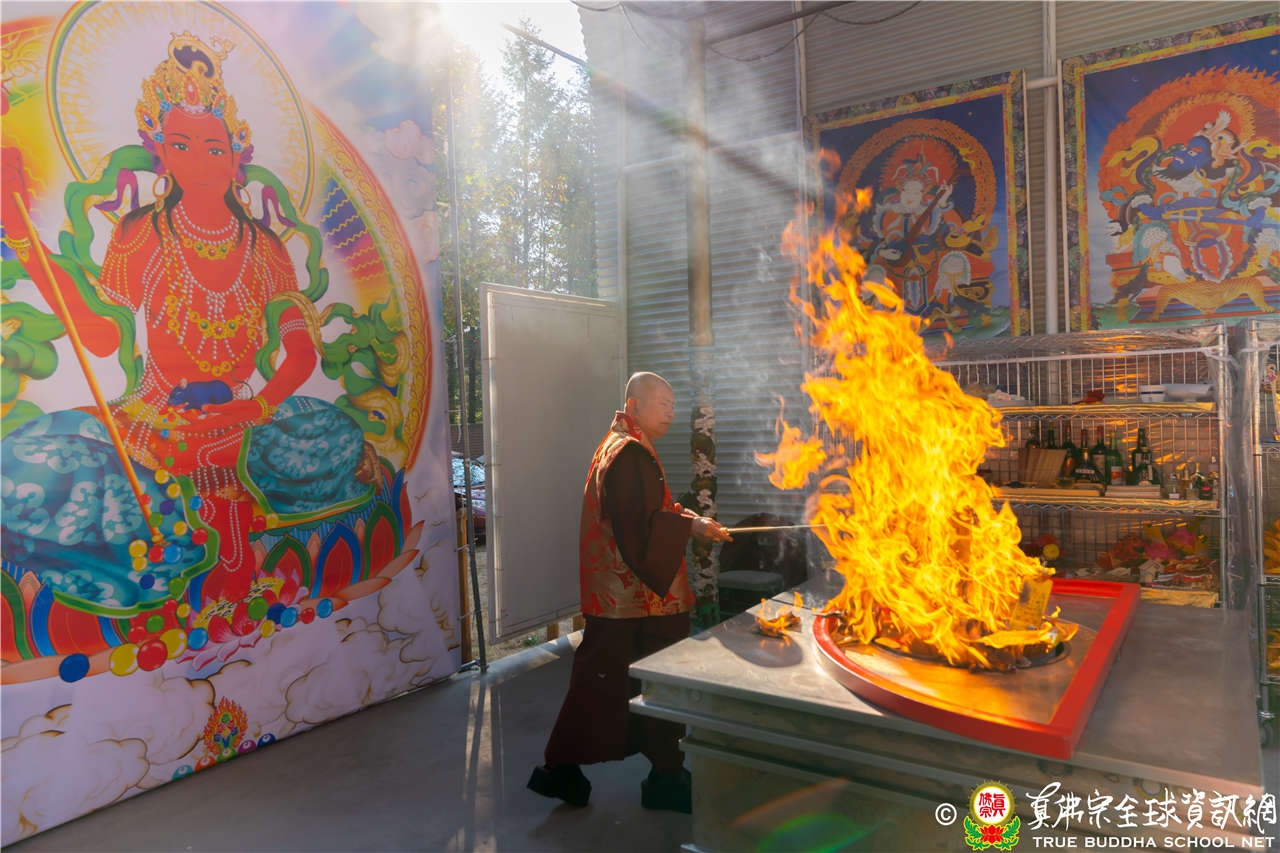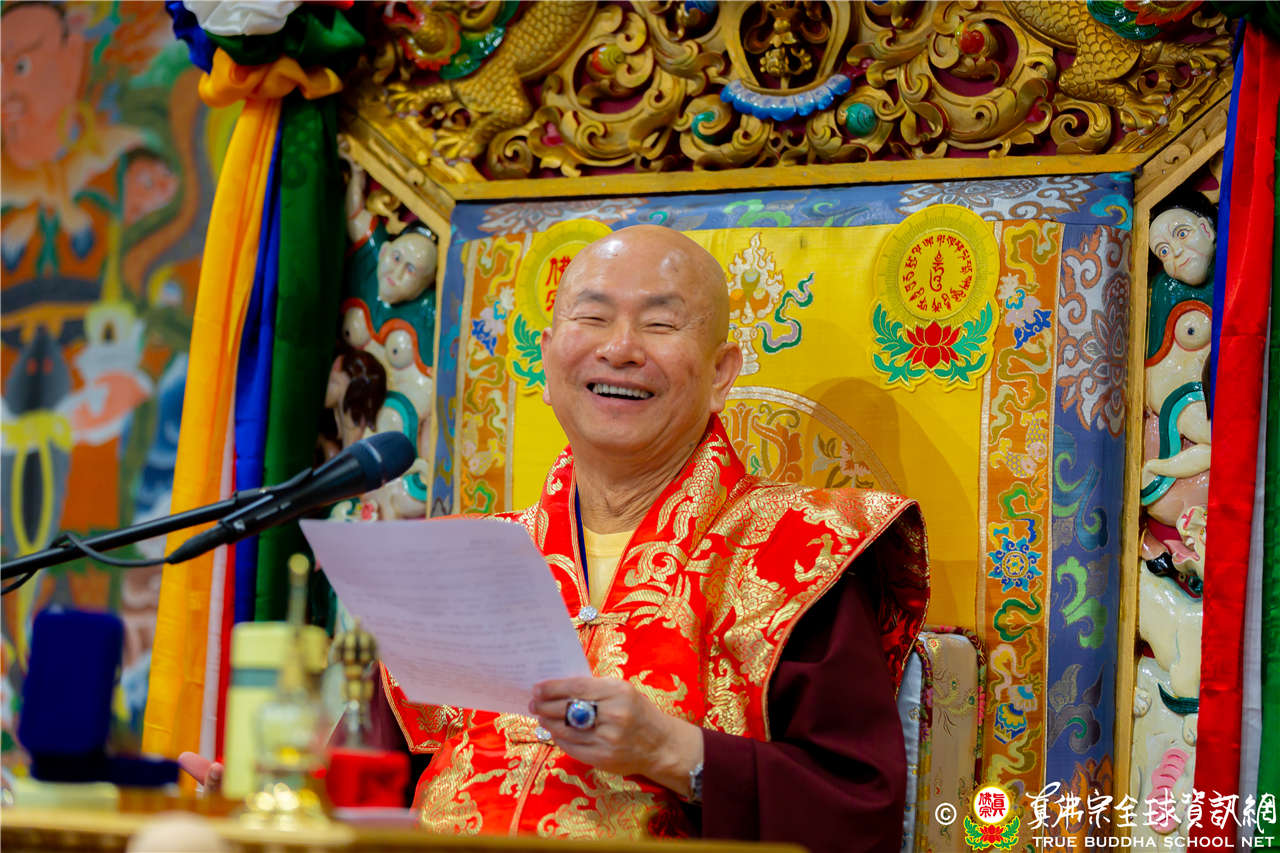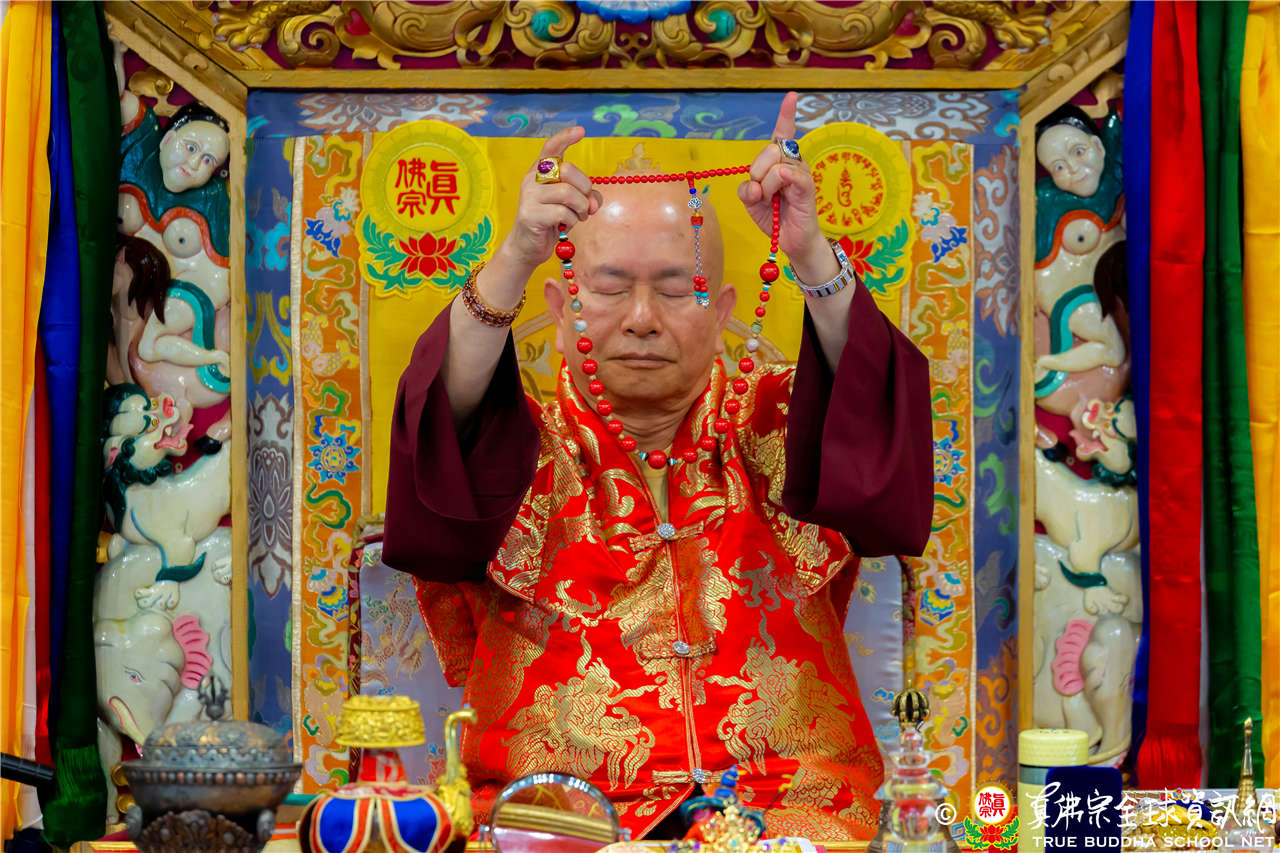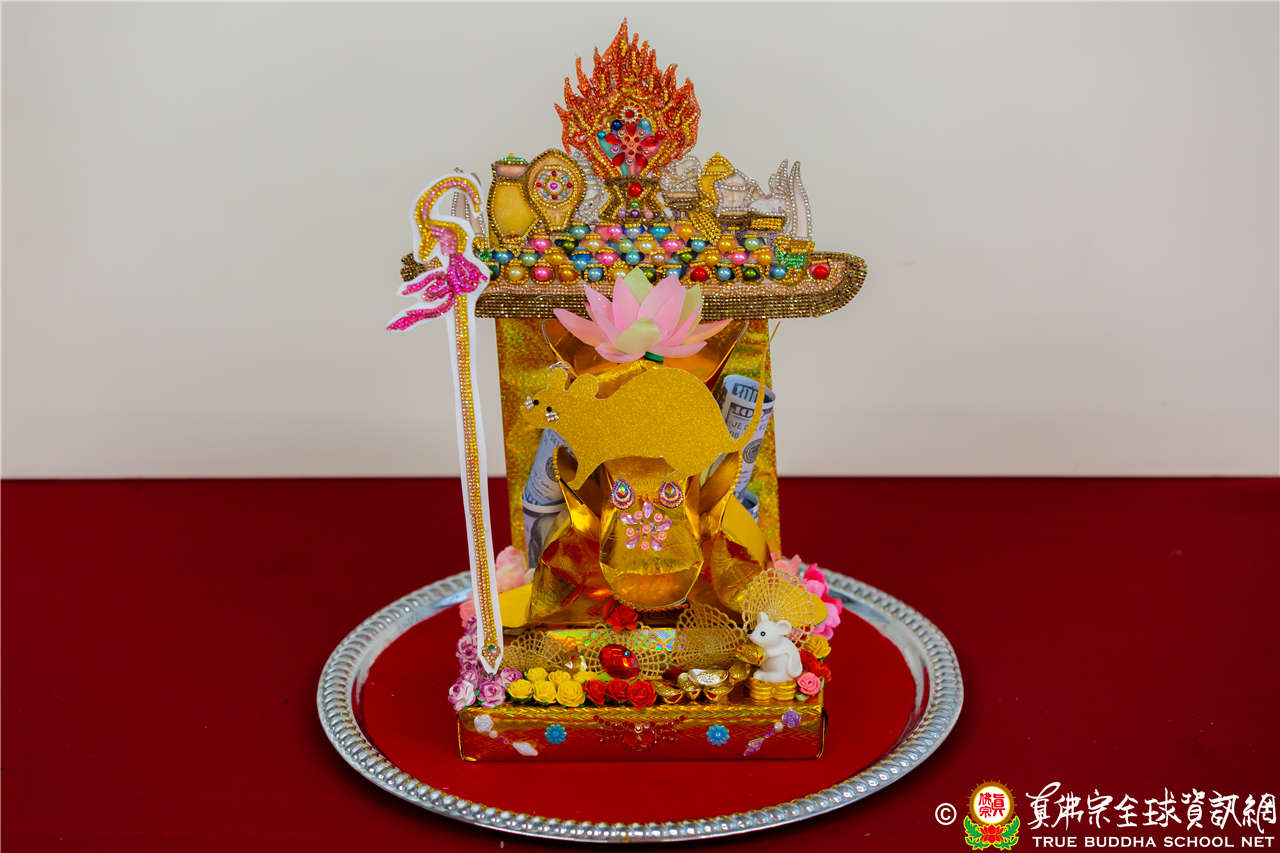
A Detailed Exposition of the Vimalakirti Sutra
by Grandmaster Lu, Living Buddha Lian Sheng of the True Buddha School
Translated into English by the True Buddha School Vimalakirti Translation Team
Discourse 41, 9 October 2022 - Chapter One—Buddhaverse (Continued)
Chapter One—Buddhaverse
Greatly Adorned Bodhisattva,
Accumulated Treasures Bodhisattva,
Accumulated Eloquence Bodhisattva
Today we will talk about these three great bodhisattvas.
Greatly Adorned Bodhisattva
Who is the Greatly Adorned Bodhisattva? Someone once asked Sakyamuni Buddha what it meant to be “great.” The Buddha answered, “The one in union with the Dao [the path] is great.”
In Tantrayana, one is great when one is in union with the yidam. The yidam represents the Dao—the yidam is the Dao, and the yidam is the wisdom deity. When you are in union with the great wisdom deity, you have great wisdom, and thus, you are “great.” Without great wisdom, one cannot be considered great; one is just small.
There are many wealthy people around the world. I believe among the richest people in Taiwan these days are the Tsais. They are the founders of Cathay Life Insurance & Fubon Financial—strong groups. The incumbent Taiwanese leader is also a Tsai. Many rich people have Tsai as their surname, but very few with the surname Lu.
Terry Gou is also very rich; he owns private jets, yachts, with assets in the billions and trillions. It’s incredible! But do they have great wisdom? If you have lots of money and power, accompanied by great wisdom, then that would be perfect. Unfortunately, extremely few people have great wisdom. If you have great wisdom, then you can use it to adorn yourself and you would become dignified and magnificent. Great wisdom is magnificent!
Buddhas are in these three forms: dharmakaya, sambhogakaya, and nirmanakaya. The dharmakaya buddha has no forms. The sambhogakaya buddha appears utterly magnificent and dignified. The nirmanakaya buddha is also magnificent with the thirty-two major marks and eighty minor marks of perfection. Why do they appear magnificent? Because they embody great wisdom. Whoever has great wisdom is naturally the Greatly Adorned Bodhisattva.
Grandmaster has never been envious of the most powerful or the wealthiest. We can’t compare to them anyway. There are many multi-billionaires, some in Taiwan and mainland China, and I heard that the richest ones are in Southeast Asia. I don’t envy them at all because these things are momentary, let alone beauty. Good looks pass even faster.
In Tibet, female deities such as Manohara are depicted as 16-year-old. Beauty peaks at 16 and then it starts to wane. In the West, a girl is considered an adult at 18 and said to begin aging at 25. There is no more youthful beauty in middle and old age.
That’s why I often reiterate: At the age of 1 you are born with merriment, at 10 you are into your studies, at 20 you are at the top of your youth, at 30 you are into your career, at 40 you start to gain weight, at 50 you pretend to be strong, at 60 you start to have hypertension, at 70 you become forgetful, at 80 you walk wobbly, at 90 you forget everything, and at 100 you are in a picture frame hung on the wall.
Everything is everchanging. You started with a full head of black hair, and it ends up all white. Teeth become loose and eyesight becomes blurry. Nothing in samsara is enviable. What is more important is having great wisdom! The one who adorns themselves with great wisdom is called the Greatly Adorned Bodhisattva.
Accumulated Treasures Bodhisattva
Next is the Accumulated Treasures Bodhisattva or the Bodhisattva with Cumulation of Treasures—the one who has accumulated many dharma treasures. In True Buddha School, Grandmaster has mastered an abundance of dharma—you will find all kinds of dharma in True Buddha School.
Grandmaster has bestowed many transmissions of dharma—the precious tantric dharma. Upon receiving this great bounty of dharma, you put it into practice and truly gain benefits. In this way, you accumulate dharma treasures and become the Accumulated Treasures Bodhisattva.
It is not “in one ear, out the other” where nothing stays. I hope the dharma is not something that graces your ears while you’re listening and forgotten immediately afterward. Without practice and realization of the dharma, you will continue living as a mundane person.
If you practice the dharma, you will gain spiritual experiences and be in spiritual union with the deity. You will thus gain great wisdom like your yidam and become the Greatly Adorned Bodhisattva.
Once you gain spiritual responses from all the dharma you have accumulated, you become the Accumulated Treasures Bodhisattva. This Treasures refer to dharma treasures—a great abundance and all sorts of dharma treasures. You can handle any situation that arises. You are at ease, carefree, and become the self-mastery bodhisattva. This bodhisattva is the Accumulated Treasures Bodhisattva.

Sakyamuni Buddha transmitted lots of dharma, including the crucial teaching of the Three Dharma Seals, of which the first is: “All things are impermanent.” Like the joke I told earlier—being born at the age of 1 to being hung on the wall at the age of 100—what does this imply? It is to remind us that everything and all things are impermanent.
You can’t stay wealthy forever. Even if you are rich now, you can become poor in a split second. My grandfather, Lu Chang, was very rich. During World War II, he owned all the property in the East Market in Chiayi—he was rich and had six wives. Back then it was normal for a well-to-do to have many wives. I really envied my grandfather. [laughing] Toward the end of the war, American fighter planes bombed one of the military airports—Shuishang Airport—in Chiayi County. All of Chiayi was on fire. All my grandfather’s property, along with his wealth, was blown up and destroyed in an instant. Just like that, it was all gone! Everything is impermanent. As a result, my father and I lived very poorly.
Therefore, wealth is not forever, fame is not forever, power is not forever! Look at American presidents from George Washington to the last one. They all had power at one point but not anymore. It’s even worse with South Korean presidents as many of them ended up in prison, and some even jumped off cliffs and killed themselves. A president did that?! Thus, power, wealth, and beauty are not forever.
Then what is forever? Dharma treasure is. You learn and apply all the tantric teachings, benefit from them, and upon obtaining spiritual responses, you liberate yourself. Then you teach sentient beings accordingly. This is how you become the Accumulated Treasures Bodhisattva.
Accumulated Eloquence Bodhisattva
Next is the Accumulated Eloquence Bodhisattva also known as the Bodhisattva with a Cumulation of Eloquence. This bodhisattva can answer any question asked. This is called eloquence—unhindered eloquence. Grandmaster can answer any questions asked in the weekly Q&A [posed by people around the world]. I can answer the questions even without any references. Why? Because of the great wisdom embodied in Grandmaster!
By having a cumulation of dharma treasures, Grandmaster can answer any questions asked. The one with great wisdom and an abundance of dharma treasures becomes Accumulated Eloquence Bodhisattva. No one and nothing can trump one’s unhindered eloquence.
Much of Tibetan culture and tradition came from India, including Tibetan Tantric Buddhism and its fondness of debates. The translator Drogmi Lotsawa travelled to India to seek dharma, and he transmitted to the three Zurs upon his return to Tibet and founded the Sakya Sect. Marpa—a disciple of Drogmi—also went to India to study dharma with Naropa, and later established the White Sect, Kagyupa in Tibet. Tibetan lamas still debate with each other nowadays, asking each other questions.
One famous champion of debates is Guru Padmasambhava, the forefather who brought Tantric Dharma during the early transmission of Tantric Buddhism into Tibet. He is known to be Indian, but in fact was from Afghanistan. He established the Nyingma Sect—the “old school.”
An even more famous victor of debates is the Venerable Guru Atisa, who upon invitation by the King of the Guge Kingdom embarked on the latter transmission of Tantric Buddhism into Tibet. The Three Levels of Spiritual Capacity is one of his renowned teachings. Venerable Atisa was a master debater who never lost. When he was still in India, every time he won a debate, he would receive a parasol from his opponent, as well as their temples and followers. His opponents would then take refuge in him. He had many parasols over him and carried a bunch of temple keys on his chest. These symbolized great knowledge and competency as a spiritual guide. He had such great eloquence!
Venerable Atisa was the forefather of the latter establishment of Tibetan Tantric Buddhism, whereas Guru Padmasambhava was the forefather of its early transmission. Those with great eloquence and mastery in debates are called the Accumulated Eloquence Bodhisattva. They can express anything and without any hindrances convince anyone to take refuge willingly. No one can win over them. They know the truth and can speak accordingly.
Thus, today we have covered:
Greatly Adorned Bodhisattva,
Accumulated Treasures Bodhisattva,
Accumulated Eloquence Bodhisattva.
Om mani padme hum.



Next discourse on the Vimalakirti Sutra: Discourse 42, 15 October 2022 - Chapter One—Buddhaverse (Continued)
Previous discourse on the Vimalakirti Sutra: Discourse 40, 8 October 2022 - Chapter One—Buddhaverse (Continued)
Index of links to all discourse on the Vimalakirti Sutra: https://en.tbsn.org/guidem/detail/2975/
Back to the main index page of all dharma discourse: https://en.tbsn.org/guidem/index
Full webcast of 2022.10.9 Red Manohara Vasudhara Homa Ceremony (Rainbow Temple, North Bend, USA) and dharma discourse with English interpretation: https://youtu.be/Nj3qs7lLEHs




